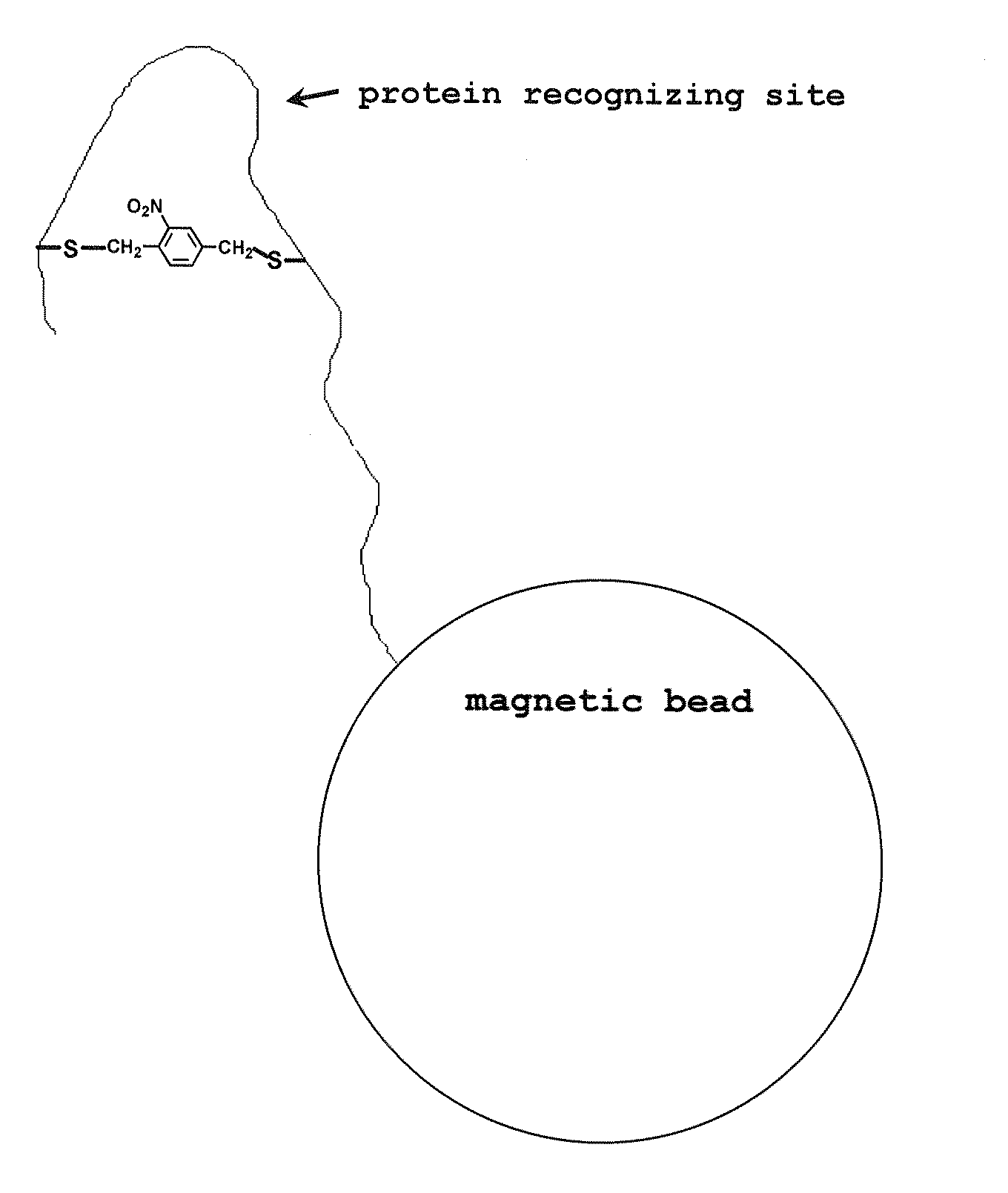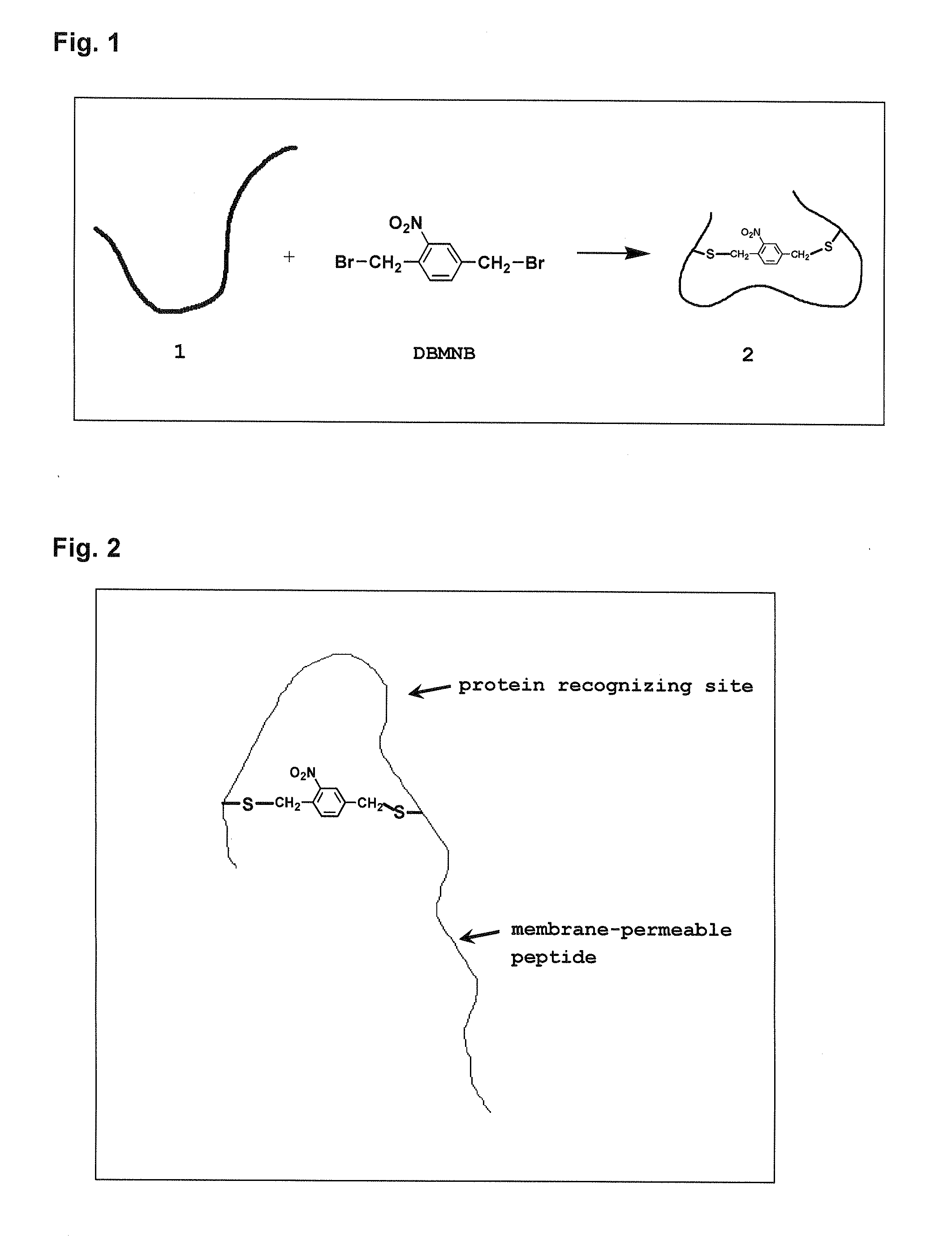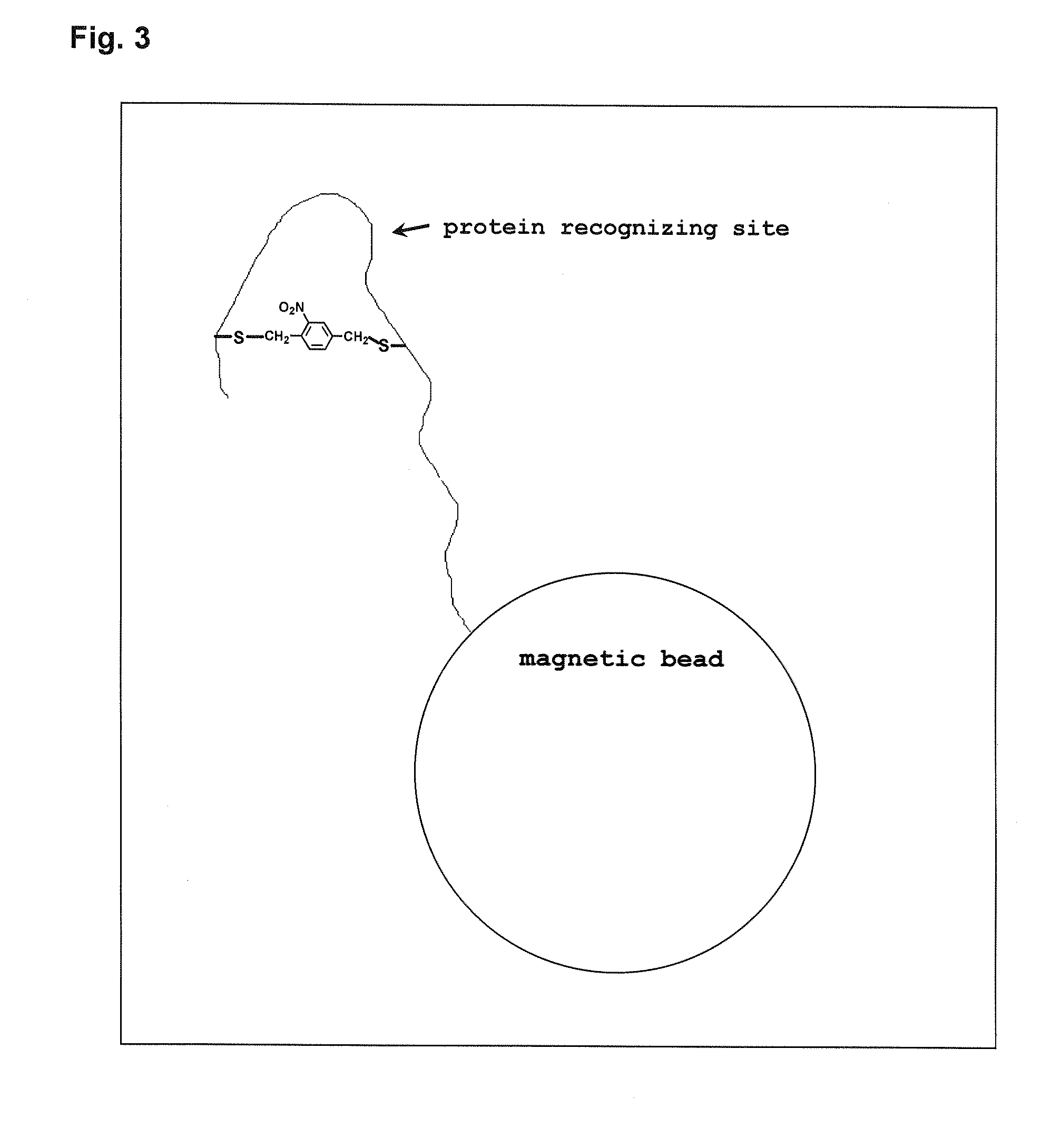Photoregulated peptide, and method for regulation of peptide-protein complex formation using the photoregulated peptide
a technology of photoregulation and peptide, which is applied in the direction of peptide/protein ingredients, peptide sources, instruments, etc., can solve the problems of bioactive peptide decomposition by enzymes and difficult to perfectly block the recognition of protein by the peptid
- Summary
- Abstract
- Description
- Claims
- Application Information
AI Technical Summary
Problems solved by technology
Method used
Image
Examples
examples
1) Synthesis of Compound DEMNB Containing Photocleavable Cross-Linking Group
[0076]Into a 50 mL recovery flask, 0.92 g (5 mmol) of 2,5-di(hydroxymethyl)nitrobenzene, 2.62 g (10 mmol) of triphenylphosphine, and 3.32 g (10 mmol) of carbon tetrabromide were charged and suspended in 20 mL of dehydrated diethylether to give a suspension. Then, the interior of the flask was replaced by nitrogen, and the flask was closely sealed with a septum so as to prevent oxygen and moisture in an atmosphere from entering.
[0077]The suspension in the above flask was stirred for 6 hours while the temperature was kept at 25° C. in a thermostat bath, and then stirred for 2 days at room temperature. Solvent in the reaction solution obtained was distilled off under reduced pressure by an evaporator. The residue was dissolved into several tens mL of chloroform, and passed through a column of silica gel (2.5 cm in diameter×3 cm), and all eluate was collected. Further, chloroform for washing (about 200 mL) was p...
PUM
| Property | Measurement | Unit |
|---|---|---|
| temperature | aaaaa | aaaaa |
| diameter×3 | aaaaa | aaaaa |
| pH | aaaaa | aaaaa |
Abstract
Description
Claims
Application Information
 Login to View More
Login to View More - R&D
- Intellectual Property
- Life Sciences
- Materials
- Tech Scout
- Unparalleled Data Quality
- Higher Quality Content
- 60% Fewer Hallucinations
Browse by: Latest US Patents, China's latest patents, Technical Efficacy Thesaurus, Application Domain, Technology Topic, Popular Technical Reports.
© 2025 PatSnap. All rights reserved.Legal|Privacy policy|Modern Slavery Act Transparency Statement|Sitemap|About US| Contact US: help@patsnap.com



